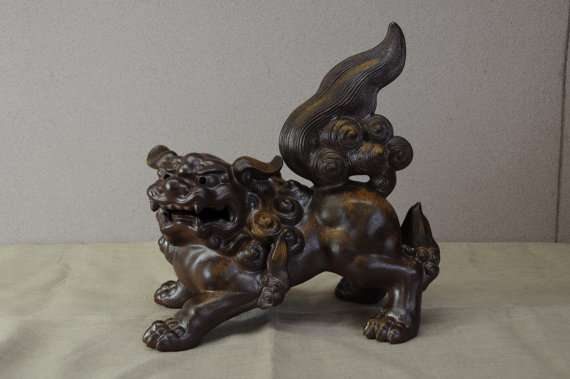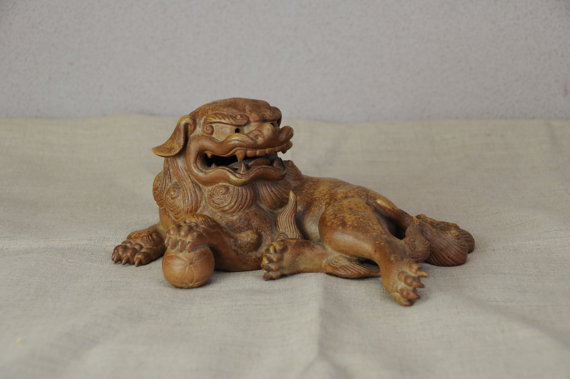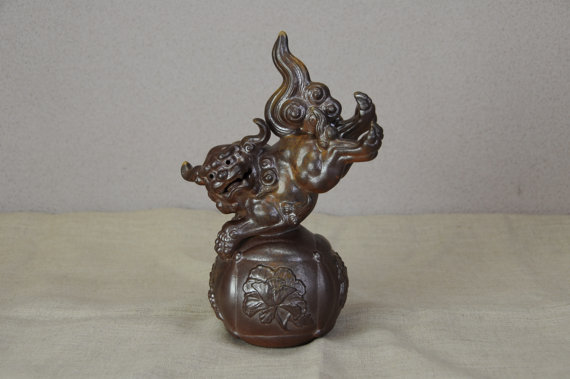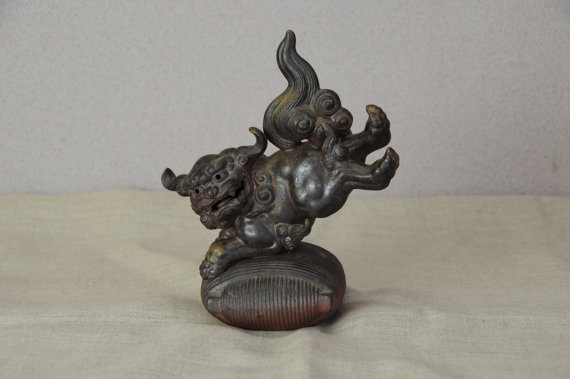Japanese Potteries(Explanations to the technical terms of ceramics No.7)
There are various technical words on potteries. Here are some of those, for which I'd like to give you some remarks.
Karajishi (Artistic Portrait of a Lion)
In Japan, we sometimes see a portrait of animal that we can't identify what it is. Karajishi is one of them as well as kylin, ho-ou (phoenix) and baku. The Japanese writing characters tell that the karajishi is a Chinese lion, however, there are tigers but no lions in China. What does a Chinese lion mean?
The king of beasts, lions, had been treated as a symbol of the royal throne since the ancient orient times before Christ. In brief, it was lions that represented power, strength and ascendancy. A Sphinx sitting neatly in front of a Pyramid is human in its upper body and lion in its lower body. In the present time, many companies or groups arrange lion in their logo marks. Lions that came down to China through the Silk Road had been described as a beast that they had never seen, so the image of that had been gradually changed to be like a fantasy animal which body was covered with spiral bristles. That was the karajishi.
The animal in fantasy has had spiritual power and has become a sacred beast to guard King or hierarch.
In the same sense, shishi(s)and komainu(s) laid at a gate of shrine have a role to prevent bad vibes entering inside. The one threatening with opening its mouth wide is the shishi. There are plenty karajishi(s) Eas a kind of shishi - arranged at the Yomeimon gate of the Nikko Toshogu Shrine, which are also for the effect of expelling evil spirits.
Karajishi(s) had been appreciated by warrior (or samurai) families as they were the king of beasts, and drawn on their ornaments very often. Excellent paintings of them can be seen especially on byobu Efolding screens Eand windows of fusuma Epapered sliding door. Among the ordinary people, shishimai Ea mask of lion dance Ehas appeared which was made simply as a model of karajishi, and we can see its soul-stirring dance even now. On the other hand, since the 18th century, karajishi had appeared also on tattoos and the vigorous appearance with the tattoo gained popularity among those from firefighters through townspeople.
Karajishi is often designed being combined with peonies. A reason of this is that it's considered to call for good fortune to mix up the king of beasts and the king of flowers, however, someone says that there is another reason.
Even for a karajishi that never lose a match, there is something that it fears, which is a worm that parasitizes in its body. If it is left as is, it will eat the skin and then flesh. It's said that the only way to avoid from that was to apply evening dew on peony leaves that the worm didn't get closer to. Therefore, karajishi is likely to sleep under peonies at night. You may be able to see a figure of karajishi at night faintly around peonies.
Karajishi(s) that had guarded shrines for such a long time and had been described in paintings, sculptures, and even tattoos with a sense of affection, even though the origin was from China, have now firmly become colonized in Japan and play a role of its culture. Now some people decorate their house entrance with a karajishi hoping for the effect against bad spirits, but it might be also good to appreciate it as one of the fine works of sculpture.
You can purchase the products. Click an item to view its detail at Marketplace.




